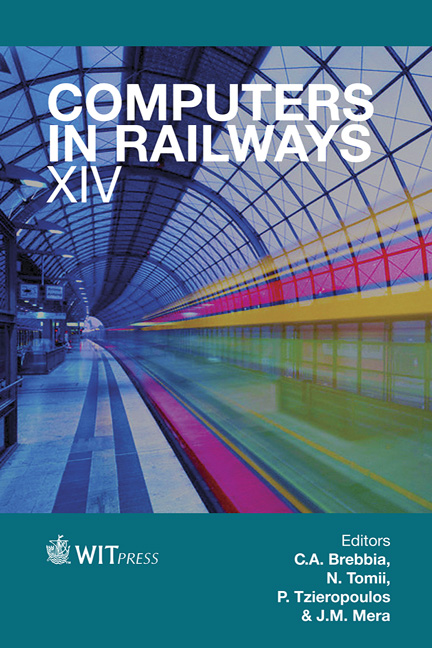Strategy Of Speed Restriction Allowing Extended Running Times To Minimize Energy Consumption And Passenger Disutility
Price
Free (open access)
Transaction
Volume
135
Pages
11
Page Range
733 - 743
Published
2014
Size
1,037 kb
Paper DOI
10.2495/CR140611
Copyright
WIT Press
Author(s)
N. Kimura & M. Miyatake
Abstract
Due to a power crisis caused by the Great East Japan Earthquake on 11 March 2011 and the subsequent accident of Fukushima Daiichi nuclear power station, electrical energy consumption used in every sector including railway operators was restricted by the government in the summer of the same year. Since then, railway manufacturers, operators and research organizations have developed technologies of reducing train energy consumption. Improvement of scheduling and train speed control for energy-savings only needs software-based improvements that lead to less cost and time. The authors consider \“restraining maximum speed of the train allowing extended running times” in order to reduce train energy consumption against power crisis or substation failure. The problem was defined as a multiobjective optimization problem. Energy consumption and total incremental trip time were calculated as objective functions by using speed profile simulation. The total incremental trip time was calculated with the increased sum of all passengers’ running, stoppage and waiting times by speed restriction. All the feasible combinations of setting maximum speed restriction for each train were tested to find the pareto-optimal solutions. The final solutions which are better than the curtailed train service were selected from the paretooptimal solutions. The efficacy of the proposed method was demonstrated with a case study of one direction service of a double track commuter line. Keywords: power crisis, energy-saving, multiobjective optimization, trip time, maximum speed restriction, pareto-optimal solutions.
Keywords
power crisis, energy-saving, multiobjective optimization, trip time, maximum speed restriction, pareto-optimal solutions.





